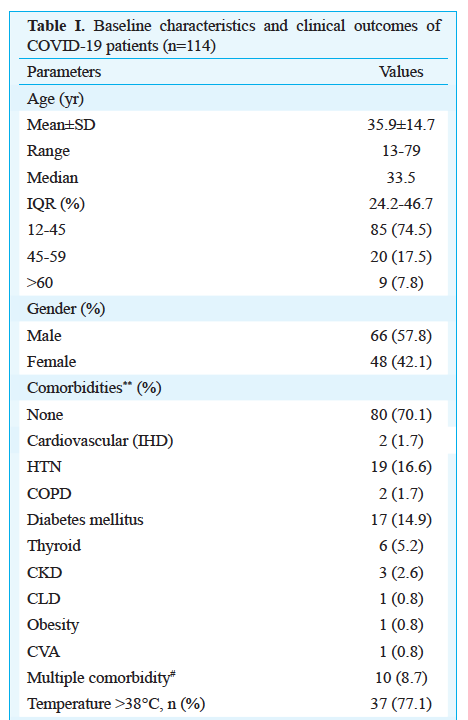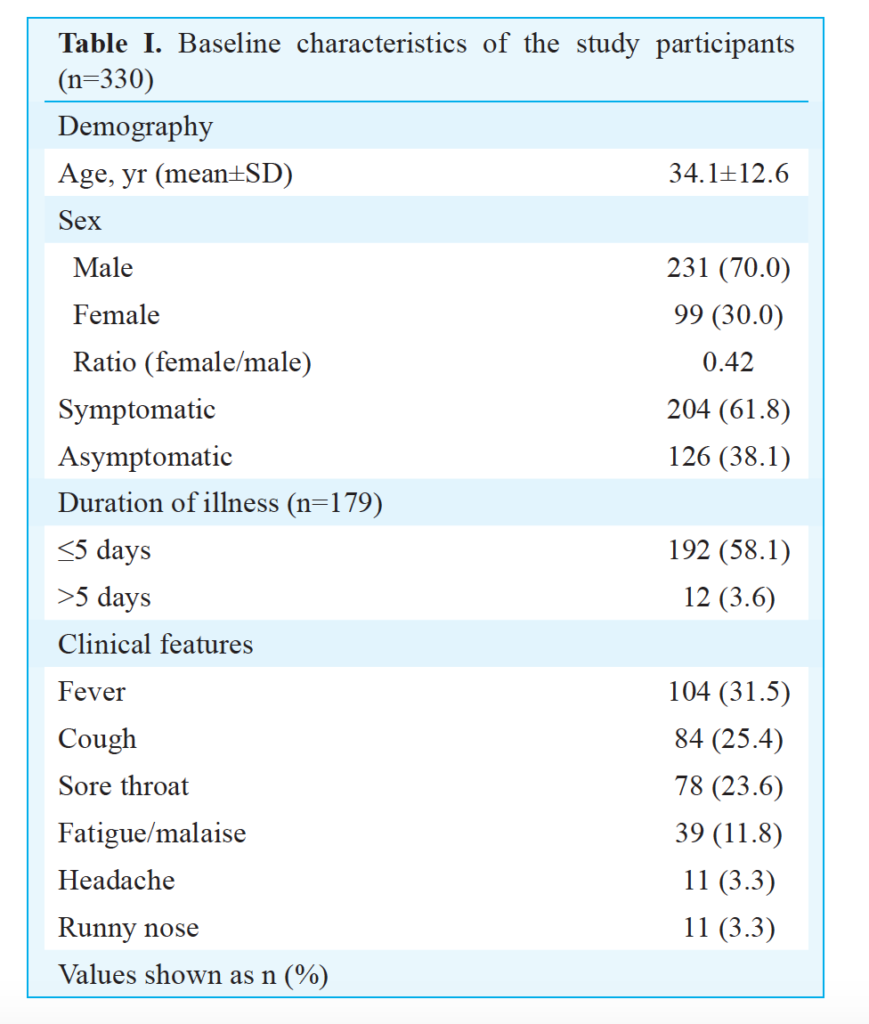Ever since the onset of COVID-19 in India, efforts are on to understand the virus and its effects with more clarity. The latest issue of Indian Journal of Medical Research (IJMR) published a few of these studies. We summarise three such studies that look at the profile of COVID-19 patients in North India, a mathematical model to study the impact of lockdown and the comparison between RT-PCR & rapid tests for COVID-19 diagnosis in India.
In earlier stories, we looked at important research and studies around COVID-19 being carried out in India up until July 2020. We referred to the articles published in various issues of ICMR (Indian Council of Medical Research)’s Indian Journal of Medical Research (IJMR). In this article, let us understand the relevant research developments that have further informed our understanding of COVID-19 since July 2020.
While young and asymptomatic patients were in majority, patients with comorbidities more vulnerable to complications.
The COVID-19 pandemic emerged as a major public health emergency. Considerable disparities in demographic and clinical patterns have been observed between countries across different continents. A study conducted by ICMR in northern India analyses the clinical profile and outcomes of patients with COVID-19. The study was conducted at the Nehru Hospital Extension Block, a dedicated COVID hospital at the Postgraduate Institute of Medical Education & Research (PGIMER), Chandigarh, India, from April 1 to May 25, 2020. The major findings of the study are as follows:
- Majority COVID-19 patients were young and asymptomatic.
- Fever was observed in three-fourth of the patients and respiratory symptoms in half.
- Patients with comorbidities were more vulnerable to complications.
This study highlights the clinical characteristics and outcomes of consecutive adult patients (>12 yr) who tested positive on RT-PCR for COVID-19 on a throat and/or a nasopharyngeal swab and were admitted to a tertiary care hospital. Pregnant women and children were not included in the study.
During the study period, 114 patients with COVID-19 infection were admitted. The median age of the patients was 33.5 yr (13-79 yr), and there were 66 (58%) males. The history of contact with COVID-19-affected individuals was available in 75 (65.8%) patients. Of the total enrolled patients, 48 (42%) were symptomatic. Among the symptomatic patients, the common presenting complaints were fever (37, 77%), cough (26, 54%) and shortness of breath (10, 20.8%). Nineteen (17%) patients had hypoxia. Thirty four (29.8%) patients had an accompanying comorbid illness. These comorbidities included hypertension in 19 (16.6%), diabetes in 17 (14.9%) and chronic renal disease in three (2.6%) patients. Ten patients (8.7%) had multiple comorbidities. Age more than 60 yr and presence of diabetes and hypertension were significantly associated with severe COVID-19 disease. Admission to the intensive care unit (ICU) was needed in 18 patients, with three (2.6%) patients requiring assisted ventilation. Mortality of 2.6 per cent (3 patients) was observed.

Asymptomatic patients were younger with a mean age of 29.90 ± 12.91 yr while the mean age of patients with severe COVID-19 was 55.9 ± 12.91 yr. Comorbidities including hypertension and diabetes were observed more frequently in patients who were symptomatic as compared to those who were asymptomatic.
Fifty nine (51.75%) patients were given specific therapies for COVID-19. Thirty seven patients (32.4%) received hydroxychloroquine (HCQ), 20 (17.54%) received a study drug Immuvac-18 and two patients (1.75%) received tocilizumab (interleukin-6 inhibitor). By the end of 25 May 2020, 108 (94.7%) patients were discharged, three were still undergoing treatment and three (2.6%) patients had died. All the three patients who succumbed to the illness had diabetes mellitus, while two patients also had chronic kidney disease.
Initial lockdown slowed down the spread of COVID-19 significantly for the country.
Another important study by ICMR presented a mathematical model for a time series prediction and analysed the impact of lockdown in the country. Several existing mathematical models were not able to account for asymptomatic patients, with limited testing capability at onset and no data on sero-surveillance. In this study, a new model was used which was developed on lines of susceptible-asymptomatic-infected-recovered (SAIR) to assess the impact of the lockdown and make predictions on its future course. The major findings of the study are as follows:
- The disease spread was reduced due to initial lockdown.
- If the mathematical model (used in the study) is correct, we may have reached herd immunity with about 380 million people already infected. However, personal protective measures remain crucial.
- If there was no lockdown, the number of active infections would have peaked at close to 14.7 million, resulted in more than 2.6 million deaths, and the peak would have arrived by June 2020. The number of deaths with the current trends may be less than 0.2 million.
A consultative committee was constituted by the Department of Science and Technology to develop a supermodel consisting of mathematical predictions as related to the COVID-19 pandemic in India. Several mathematical models namely the standard susceptible-infected-recovered (SIR)/susceptible-exposed-infected-recovered (SEIR) models failed to account for asymptomatic patients. Limited testing capability in India at the time of onset of the pandemic and non-availability of data on asymptomatic cases were some of the limitations. Building on earlier models and in-depth analysis, a new susceptible-asymptomatic-infected-recovered (SAIR) model was proposed to assess the magnitude of the impact of the lockdown on the disease burden.
The effect of lockdown and the spread in active infections and hypothetical effects of timing of lockdown are depicted in the following chart.

The mathematical model used in this study was developed to analyze the spread of the disease under three different hypothetical scenarios, namely no lockdown, lockdown starting 01 April 2020 and lockdown starting 01 May 2020. The study concludes that with no lockdown and significant travel all over, the spread of the virus would have happened much faster. It revealed that if there was no lockdown, the number of active infections would have peaked at 14+ million and the peak would have arrived by mid-May.
Comparison of test accuracy for rRT-PCR and RDT
In another interesting study by ICMR, diagnostic test accuracy was studied along with its implications for COVID-19 management in India. In an earlier article, we discussed how WHO has recommended real-time reverse transcription-polymerase chain reaction (RT-PCR) as the diagnostic method to be used for COVID-19. The limited supply of RT-PCR kits and reagents made meeting the rising demand for increased testing incompetent, worldwide. The objective of this study was to evaluate the performance of a rapid chromatographic immunoassay-based test (index test) compared with a clinical reference standard (RT-PCR).
The RT-PCR received emergency use authorization (EUA) by the Center for Disease Control and Prevention (CDC) for the qualitative detection of COVID-19 from the respiratory specimens. The RT-PCR testing requires a sophisticated Biosafety level (BSL)-2/BSL3 laboratory setup and trained technicians to run the test and interpret results. The RT-PCR takes a minimum of 8-10 h from the collection of swab to reporting of results, which can further increase in resource-limited and high-burden settings. In small towns and cities, molecular diagnostic laboratories are non-existent and the reagents/viral transport medium (VTM) and resources are difficult to procure. Therefore, the study argues that a highly sensitive and specific antigen-based rapid diagnostic test (RDT) is the need of the hour.
Many diagnostic test manufacturers are developing/have developed rapid diagnostic kits and devices to facilitate point-of-care testing. These sample kits are based on either antibody detection from blood/plasma/serum or the detection of SARS-CoV-2 antigens from respiratory samples. However, there is very limited data on the performance and potential diagnostic utility of a rapid chromatographic immunoassay-based test for COVID-19 in suspected patients. Therefore, the study evaluates the results with RDT & compares it with RT-PCR for the diagnosis of COVID-19 in India.
A cross-sectional, single-blinded, single-centre study was conducted at a tertiary care teaching hospital in north India. Patients eligible for inclusion were consecutive adults (>18 yr) with suspected COVID-19 infection. Paired samples were taken for RDT and RT-PCR (reference standard) from consecutive participants screened for COVID-19 to calculate the sensitivity and specificity of the RDT. Further subgroup analysis was done based on the duration of illness and cycle threshold values.
Of the 330 participants, 77 were RT-PCR positive for COVID-19. Sixty four of these patients also tested positive for COVID-19 by RDT. The RDT was found to have an acceptable overall sensitivity and specificity of 81.8% and 99.6% respectively. The sensitivity of RDT was higher (85.9%) in participants with a duration of illness ≤5 days.

The study concludes that RDT may be used to rule in COVID-19 in patients with a duration of illness ≤5 days. The advantages of RDT such as yielding rapid results, being at a reasonable price and being safe due to viral inactivation and the fact that this does not require sophisticated laboratory set-up or technical expertise make it an ideal test to be rolled out in high-prevalence community settings. However, this test may not be good for surveillance purposes because negative results cannot rule out COVID-19 infection, all negative tests should be covered by RT-PCR. Moderate sensitivity of the RDT can lead to false-negative results, which must be taken into consideration while making diagnostic algorithms.
Featured Image: Hopkins Medicine


